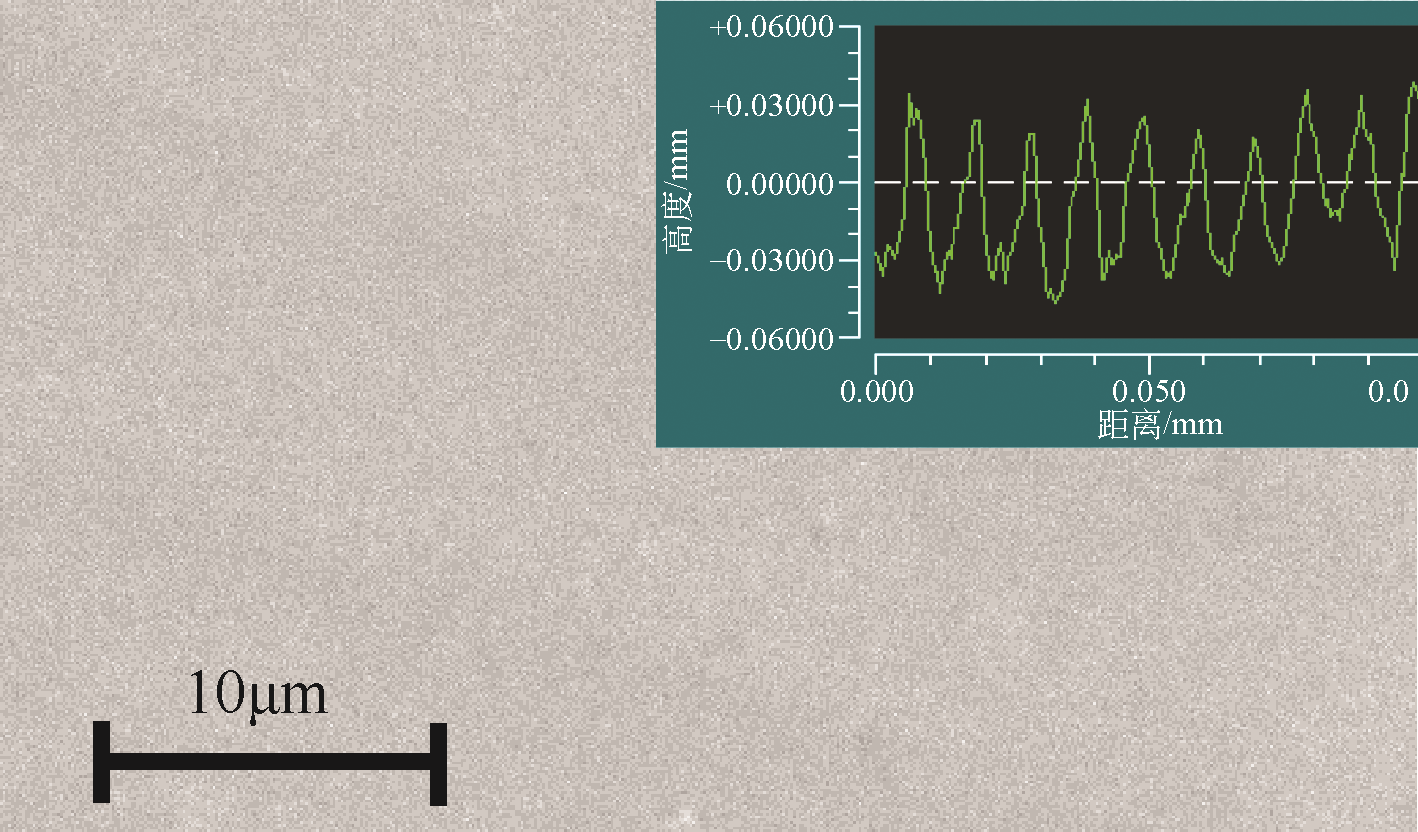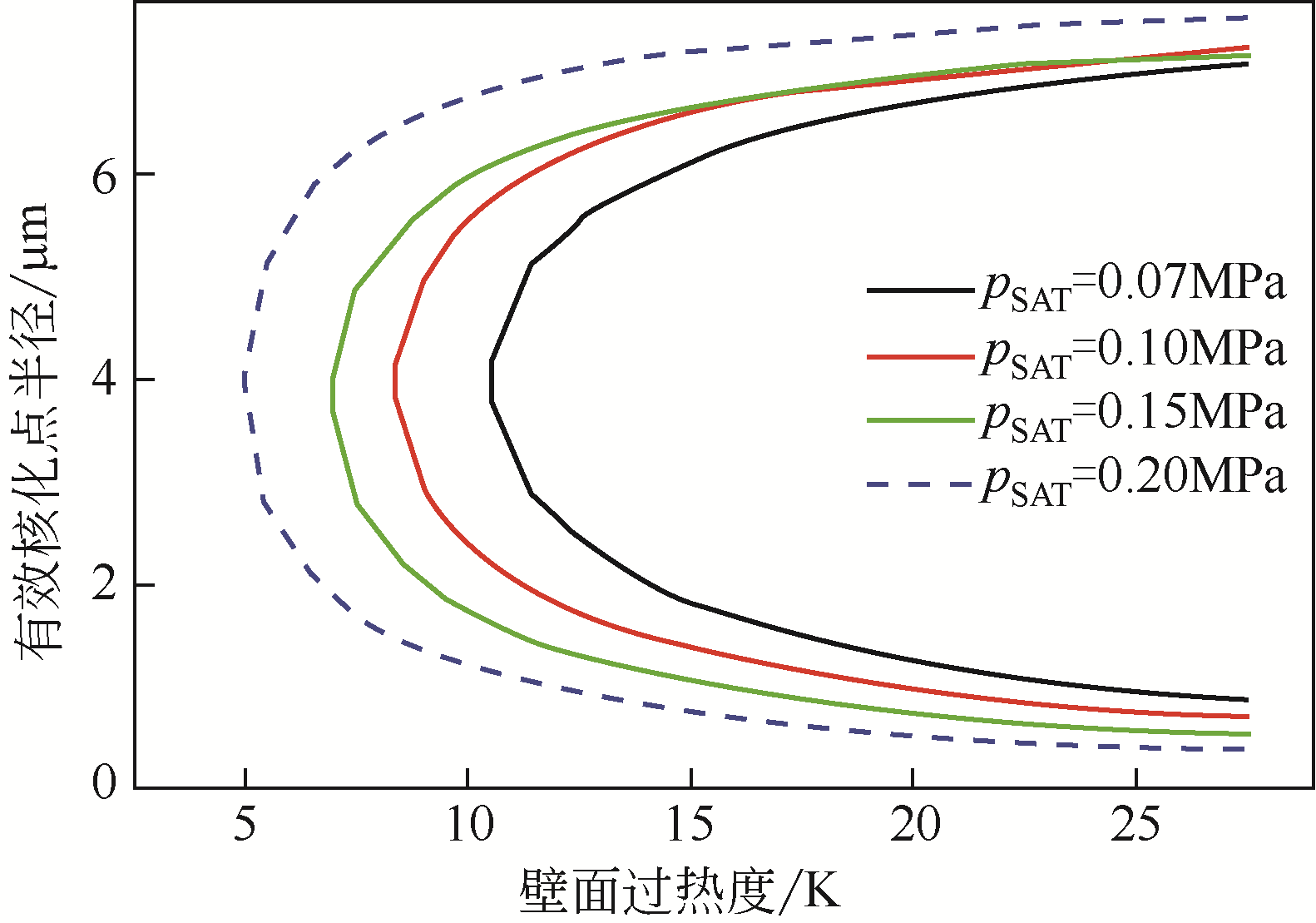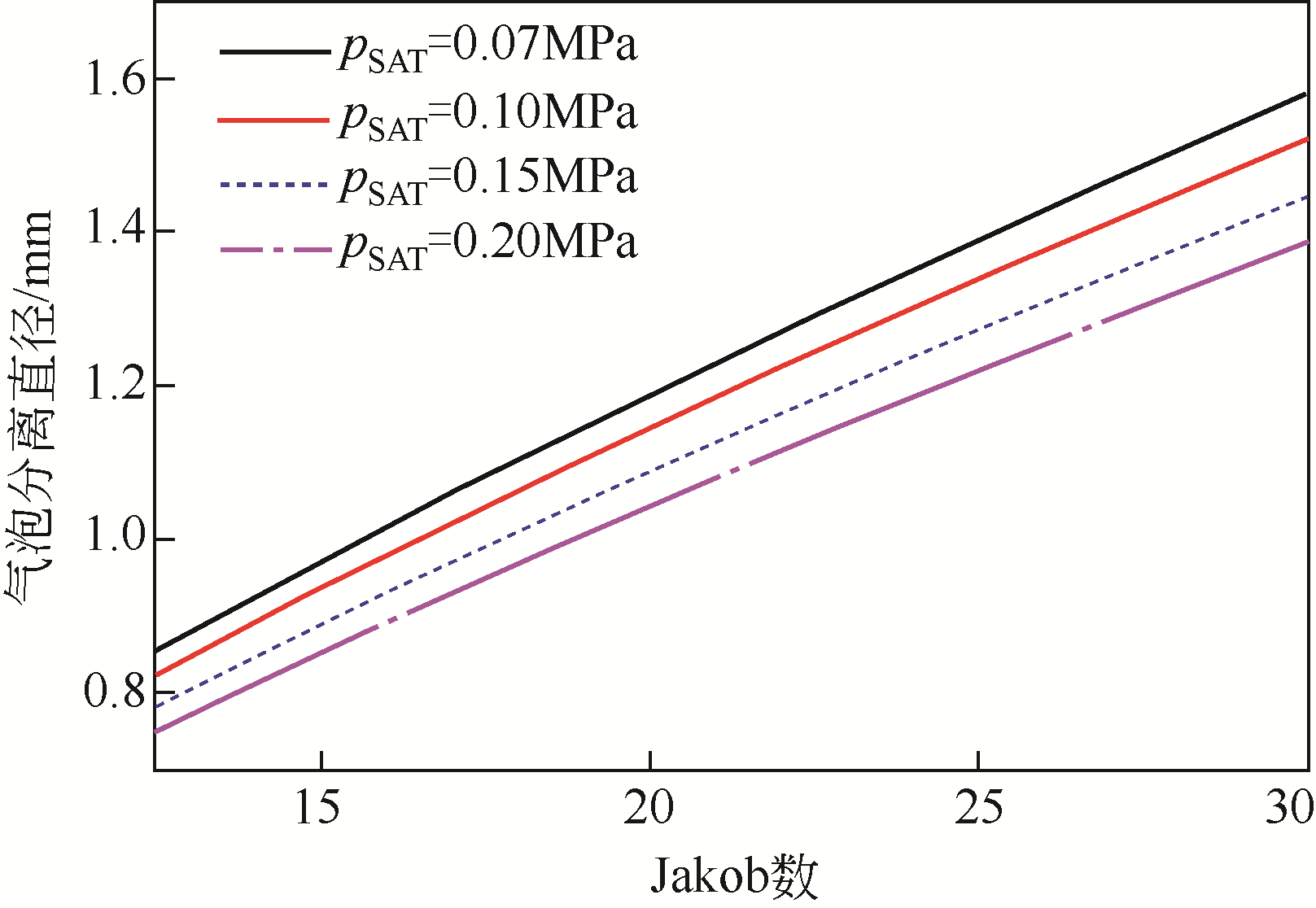| 1 |
DANG C, PENG Q, HUANG Q, et al. Experimental and analytical study on nucleate pool boiling heat transfer of R134a/R245fa zeotropic mixtures[J]. International Journal of Heat and Mass Transfer, 2018, 119: 508-522.
|
| 2 |
张伟, 牛志愿, 李亚, 等. 石墨烯/镍复合微结构表面的池沸腾传热特性[J]. 化工进展, 2018, 37(10): 3759-3764.
|
|
ZHANG Wei, NIU Zhiyuan, LI Ya, et al. Pool boiling heat transfer characteristics on graphene/nickel composite microstructures[J]. Chemical Industry and Engineering Progress, 2018, 37(10): 3759-3764.
|
| 3 |
JONES B J, MCHALE J P, GARIMELLA S V. The influence of surface roughness on nucleate pool boiling heat transfer[J]. Journal of Heat Transfer, 2009, 131(12): 121009.
|
| 4 |
牟帅,赵长颖,徐治国. 局部表面改性紫铜方柱阵列池沸腾传热特性和机理[J]. 化工学报, 2019, 70(4): 1297-1301.
|
|
MOU Shuai, ZHAO Changying, XU Zhiguo. Pool boiling heat transfer performance and mechanism of square copper pillar arrays with partially-modified surface[J]. CIESC Journal, 2019, 70(4): 1297-1301.
|
| 5 |
马强, 吴晓敏, 朱敏. 表面润湿性对核态池沸腾影响的实验研究[J]. 工程热物理学报, 2019, 40(3): 635-638.
|
|
MA Qiang, WU Xiaomin, ZHU Min. Experimental investigation of the effect of surface wettability on nucleate pool boiling[J]. Journal of Engineering Thermophysics, 2019, 40(3): 635-638.
|
| 6 |
陈宏霞, 黄林滨, 宫逸飞. 多孔结构及表面浸润性对池沸腾传热影响的研究进展[J]. 化工进展, 2017, 36(8): 2798-2808.
|
|
CHEN Hongxia, HUANG Linbin, GONG Yifei. Progress on boiling heat transfer from porous structure and surface wettability[J]. Chemical Industry and Engineering Progress, 2017, 36(8): 2798-2808.
|
| 7 |
RAINEY K N, YOU S M, LEE S. Effect of pressure, subcooling, and dissolved gas on pool boiling heat transfer from microporous, square pin-finned surfaces in FC-72[J]. International Journal of Heat and Mass Transfer, 2003, 46(1): 23-35.
|
| 8 |
KWARK S M, AMAYA M, KUMAR R, et al. Effects of pressure, orientation, and heater size on pool boiling of water with nanocoated heaters[J]. International Journal of Heat and Mass Transfer, 2010, 53(23/24): 5199-5208.
|
| 9 |
CHEN H Z, CHEN G F, ZHOU X, et al. Experimental investigations on bubble departure diameter and frequency of methane saturated nucleate pool boiling at four different pressures[J]. International Journal of Heat and Mass Transfer, 2017, 112: 662-675.
|
| 10 |
GORENFLO D, CHANDRA U, KOTTHOFF S, et al. Influence of thermophysical properties on pool boiling heat transfer of refrigerants[J]. International Journal of Refrigeration, 2004, 27(5): 492-502.
|
| 11 |
SAKASHITA H. Bubble growth rates and nucleation site densities in saturated pool boiling of water at high pressures[J]. Journal of Nuclear Science and Technology, 2011, 48(5): 734-743.
|
| 12 |
SAKASHITA H, Ono A. Boiling behaviors and critical heat flux on a horizontal plate in saturated pool boiling of water at high pressures[J]. International Journal of Heat and Mass Transfer, 2009, 52(3/4): 744-750.
|
| 13 |
KALANI A, KANDLIKAR S G. Enhanced pool boiling with ethanol at subatmospheric pressures for electronics cooling[J]. Journal of Heat Transfer, 2013, 135(11): 111002.
|
| 14 |
MUDAWAR I, ANDERSON T M. Parametric investigation into the effects of pressure, subcooling, surface augmentation and choice of coolant on pool boiling in the design of cooling systems for high-power-density electronic chips[J]. Lecture Notes in Mathematics, 1990, 843(6): 366-372.
|
| 15 |
DAHARIYA S, BETZ A R. High pressure pool boiling: Mechanisms for heat transfer enhancement and comparison to existing models[J]. International Journal of Heat and Mass Transfer, 2019, 141: 696-706.
|
| 16 |
ALVARIÑO P F, SIMON M L S, GUZELLA M D S, et al. Experimental investigation of the CHF of HFE-7100 under pool boiling conditions on differently roughened surfaces[J]. International Journal of Heat and Mass Transfer, 2019, 139: 269-279.
|
| 17 |
ROHSENOW W M. A method of correlating heat transfer data for surface boiling of liquids[J]. Transactions of ASME, 1952, 74: 969-976.
|
| 18 |
FORSTER H, ZUBER N. Dynamics of vapor bubbles and boiling heat transfer[J]. AIChE Journal, 1955, 1(4): 531-535.
|
| 19 |
STEPHAN K, ABDELSALAM M. Heat transfer correlations for natural convection boiling[J]. International Journal of Heat and Mass Transfer, 1980, 23: 73-87.
|
| 20 |
COOPER M G. Heat flow rates in saturated nucleate pool boiling a wide ranging examination using reduced properties[J]. Advances in Heat Transfer, 1984, 16: 157-239.
|
| 21 |
GORENFLO D, KENNING D. H2-pool boiling[M]. Heidelberg: Springer, 2010: 757-792.
|
| 22 |
JABARDO J M S, SILVA E F D, RIBATSKI G, et al. Evaluation of the rohsenow correlation through experimental pool boiling of halocarbon refrigerants on cylindrical surfaces[J]. Journal of the Brazilian Society of Mechanical Sciences and Engineering, 2004, 26(2): 218-230.
|
| 23 |
LI Y Y, CHEN Y J, LIU Z H. A uniform correlation for predicting pool boiling heat transfer on plane surface with surface characteristics effect[J]. International Journal of Heat and Mass Transfer, 2014, 77: 809-817.
|
| 24 |
KIM J, JUN S, LAKSNARAIN R, et al. Effect of surface roughness on pool boiling heat transfer at a heated surface having moderate wettability[J]. International Journal of Heat and Mass Transfer, 2016, 101: 992-1002.
|
| 25 |
ZUBER N. On the stability of boiling heat transfer[J]. Transactions of ASME, 1958, 80: 711-720.
|
| 26 |
KUTATELADZE S S. On the transition to film boiling under natural convection[J]. Kotloturbostroenie, 1948, 3: 10-12.
|
| 27 |
GUAN C K, KLAUSNER J F, MEI R. A new mechanistic model for pool boiling CHF on horizontal surfaces[J]. International Journal of Heat and Mass Transfer, 2011, 54: 3960-3969.
|
| 28 |
MUDAWAR I, HOWARD A H, GERSEY C O. An analytical model for near-saturated pool boiling critical heat flux on vertical surfaces[J]. International Journal of Heat and Mass Transfer, 1997, 40: 2327-2339.
|
| 29 |
BAILEY W, YOUNG E, BEDUZ C, et al. Pool boiling study on candidature of pentane, methanol and water for near room temperature cooling[C]//Thermal and Thermomechanical Proceedings 10th Intersociety Conference on Phenomena in Electronics Systems. San Diego: Institute of Electrical and Electronics Engineers, 2006: 599-603.
|
| 30 |
KIM S J, BANG I C, BUONGIORNO J, et al. Surface wettability change during pool boiling of nanofluids and its effect on critical heat flux[J]. International Journal of Heat and Mass Transfer, 2007, 50: 4105-4116.
|
| 31 |
KANDLIKAR S G. A theoretical model to predict pool boiling CHF incorporating effects of contact angle and orientation[J]. Journal of Heat Transfer, 2001, 123(6): 1071-1079.
|
| 32 |
LITER S G, KAVIANY M. Pool-boiling CHF enhancement by modulated porous-layer coating: theory and experiment[J]. International Journal of Heat and Mass Transfer, 2001, 44 (22): 4287-4311.
|
| 33 |
MOFFAT R J. Describing the uncertainties in experimental results[J]. Experimental Thermal and Fluid Science, 1988, 1: 3-17.
|
| 34 |
PRIARONE A. Effect of surface orientation on nucleate boiling and critical heat flux of dielectric fluids[J]. International Journal of Thermal Sciences, 2005, 44(9): 822-831.
|
| 35 |
HSU Y Y, KAVIANY M. On the size range of active nucleation sites on a heating surface[J]. Journal of Heat Transfer, 1962, 84(3): 207-213.
|
| 36 |
SAKASHITA H, KUMADA T. Method for predicting boiling curves of saturated nucleate boiling[J]. International Journal of Heat and Mass Transfer, 2001, 44(3): 673-682.
|
| 37 |
KIM J, KIM M H. On the departure behaviors of bubble at nucleate pool boiling[J]. International Journal of Multiphase Flow, 2006, 32(10/11): 1269-1286.
|
| 38 |
ZUBER N. Nucleate boiling. The region of isolated bubbles and the similarity with natural convection[J]. International Journal of Heat and Mass Transfer, 1963, 6(1): 53-78.
|
 ), Lei YANG2, Min ZHANG1(
), Lei YANG2, Min ZHANG1( )
)










